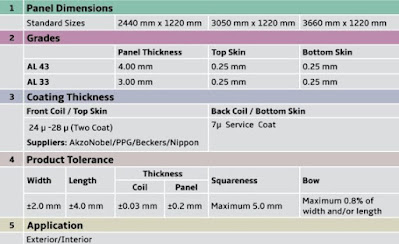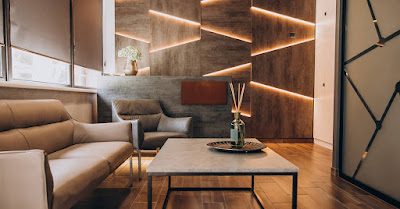How to Choose the Perfect ACP Thickness for Interior Cladding
In recent years aluminium composite panels have gained popularity for their exceptionally good durability, aesthetic appeal and versatility. Its wide usage in construction as a cladding material is making a stir in the world of architecture. Apart from choosing the core, either polyethylene or fire-rated, certain other factors ensure that the ACP is at its best. Mostly, acp sheet thickness is another contributing factor that determines its efficiency in certain situations.
ACPs are commonly used for both interior and exterior applications in architecture and design due to their lightweight nature, ease of installation, and ability to mimic various finishes like wood, stone, or metal. They offer a balance between aesthetics and functionality, providing architects and designers with creative freedom while meeting structural and performance requirements.What ACP Sheet Thickness Options Are Available?
The thickness of ACPs can vary depending on the specific application and requirements. Generally, ACPs are available in thicknesses ranging from 3mm to 6mm, with the standard options being 3mm, 4mm, and 6mm. Thinner panels are often used for interior applications such as wall cladding and partitions, while thicker panels are typically chosen for more demanding external applications like building facades.
The choice of acp sheet thickness depends on factors such as the structural load the panels need to bear, the desired level of insulation, fire resistance regulations, and the overall design vision. Thicker panels tend to offer better rigidity and impact resistance, which can be essential in areas with harsh weather conditions or high-traffic environments.
It's important to work closely with design and engineering professionals to determine the appropriate ACP thickness for your specific project, taking into consideration both aesthetic preferences and functional requirements. Additionally, local building codes and regulations should be consulted to ensure compliance and safety standards are met.
How to Choose ACP for Internal Cladding?
For internal cladding with any acp sheet size, any kind of ACP thickness can be used as there are no restrictions like wind load or external atmospheric conditions. However, choosing the core needs to be done carefully as per the building norms.
Most of the time, for internal cladding, thinner ACP sheets are used with an affordable paint coating like polyester. That is why internal cladding is more affordable than external ones.
When you are choosing the modern interior wall cladding designs there are a few things that must be considered like,
Aesthetic Possibilities
Determine the desired colour and finish of the ACPs that complement the overall interior design scheme. ACPs can mimic various materials like wood, stone, or metal. Consider the texture of the ACP surface, as different textures can create unique visual effects.
Maintenance & Durability
No matter the acp sheet thickness you choose, ACPs with a scratch-resistant surface maintain their appearance over time. Usually, ACPs for interior cladding come with a polyester paint coat but for places with kids or pets, it can be customized with PVDF or FEVE paint that will retain the shine even after exposure to liquids or other elements. ACPs are easy to clean and maintain and are ideal for high-traffic areas.
Thickness of the Panels
While it is already mentioned that the thickness of interior cladding might not matter, it must be thick enough to take the structural load. Thicker ACP sheets of 4mm might be a good option that will offer durability and rigidity in areas of higher impact like the living room or kitchen.
Fire Retardant Core
It is important to note that for interior wall cladding, paying attention to the core is significant. The usual core is made of PE that is not resistant towards fire. On the other hand, with an FR core the panels used in the interior cladding have resistance towards fire for up to 2 hours. This makes them ideal for residential projects.
Conclusion
The choice of acp sheet thickness for interior wall cladding is a crucial decision that blends aesthetics and functionality. The selected thickness should align with the project's design vision while meeting structural requirements and safety standards. Thicker ACPs offer enhanced durability and rigidity, making them suitable for areas with high impact potential. On the other hand, thinner panels can be a cost-effective solution for less demanding environments. By carefully considering factors such as load-bearing capacity, fire resistance, maintenance needs, and budget constraints, making informed decisions can transform interior spaces into captivating, safe, and enduring environments.




Comments
Post a Comment